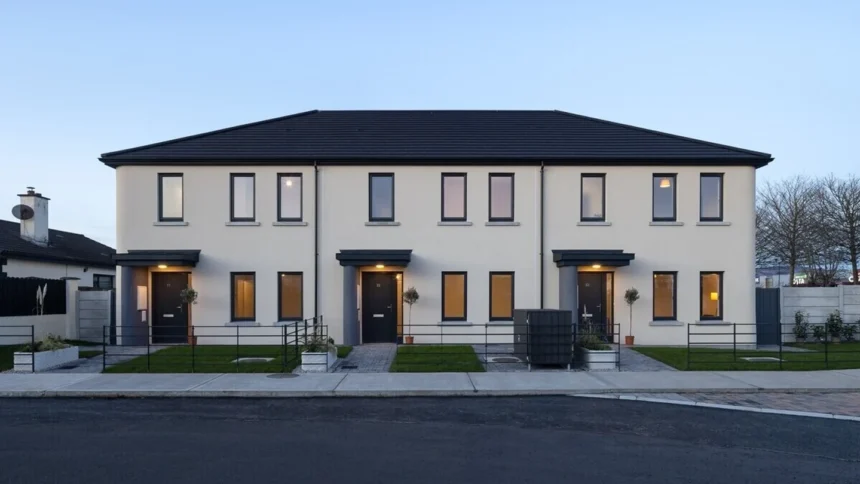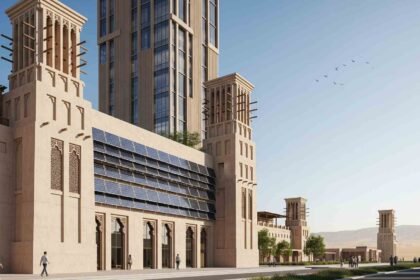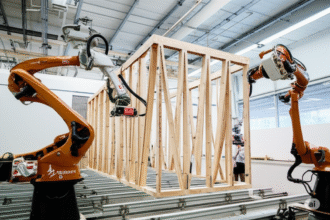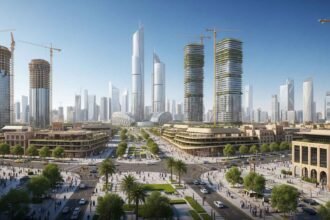Beyond novelty, these nine projects show how 3D printing in construction is shifting from small-scale experiments to impactful real-world developments. Printed buildings can be delivered faster, cheaper, and with less waste. ICON estimates savings in both time and material costs; the Irish homes took a fraction of the usual building time, while the Japanese station was erected overnight instead of over weeks.
- 1. The Abdulaziz Abdullah Sharbatly Mosque, Jeddah
- 2. Tor Alva, Mulegns, Switzerland
- 3. Hatsushima Station Shelter, Japan
- 4. Ireland’s First Two‑Storey 3D‑Printed Homes, Dundalk
- 5. ICON‑Lennar Wolf Ranch Community, Texas
- 6. ICON’s Austin Homeless Housing Project
- 7. Project Milestone — Germany’s First Printed Residential House
- 8. 3D Print Canal House, Amsterdam
- 9. The Tecla Prototype Home, Italy
1. The Abdulaziz Abdullah Sharbatly Mosque, Jeddah
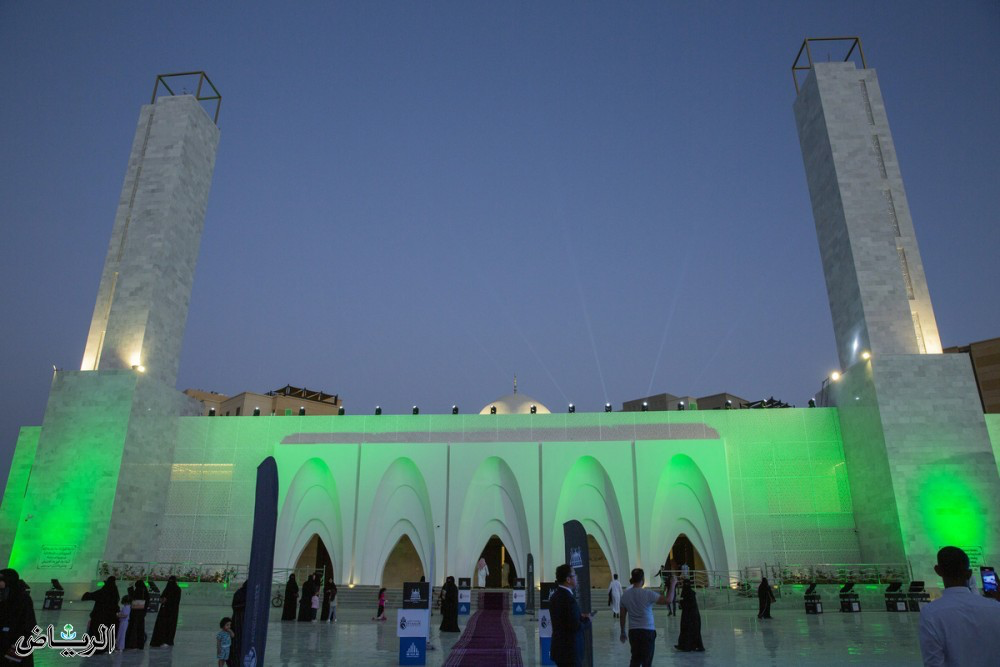
In March 2024, Saudi Arabia unveiled the world’s first 3D‑printed mosque, located in Jeddah’s al-Jawhara neighbourhood. Built using four industrial printers from Hangzhou GuanLi, the mosque blends traditional Hejazi style with cutting‑edge methods. The structure covers about 5,600 m² and was completed in six months under the guidance of architect Mohammed bin Adam al‑Suqair and developer Wajnat Abdulwahed.
2. Tor Alva, Mulegns, Switzerland
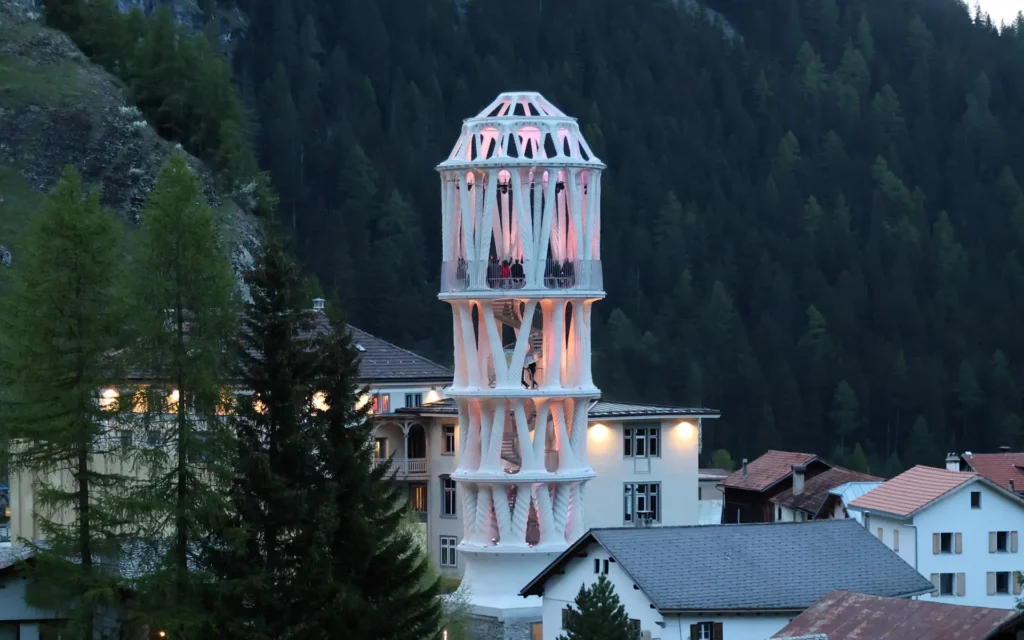
In May 2025, residents of Mulegns, a tiny Alpine village of just 12 inhabitants, celebrated the unveiling of Tor Alva, now officially the world’s tallest 3D‑printed building. Reaching nearly 100 ft in height, this sculptural tower houses a 32‑seat cupola theatre and aims to spark cultural tourism and revive the community. Printed offsite at ETH Zurich, its columns took shape using a specially formulated fast‑setting concrete blend.
3. Hatsushima Station Shelter, Japan
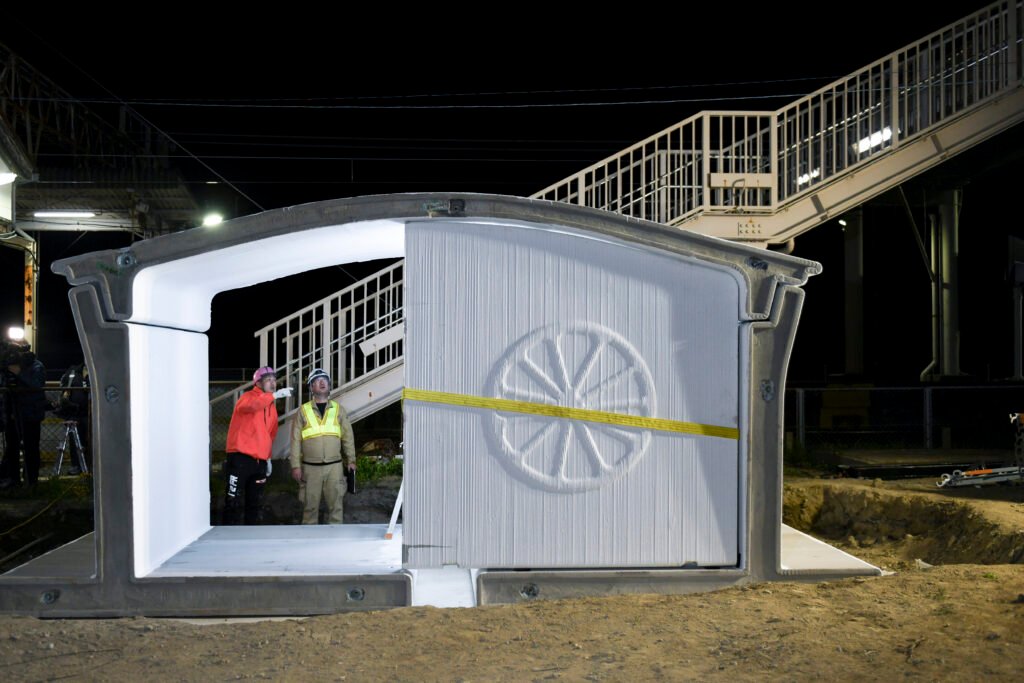
In early 2025, JR West replaced a 75‑year‑old wooden shelter at Hatsushima Station (south of Osaka) with a reinforced‑concrete shelter printed in 3D. Decorative reliefs of a local mandarin orange and a beltfish adorn the ten‑square‑metre structure. The individual moulds were printed elsewhere and assembled on site in just six hours instead of the usual two‑month build time. This is considered the world’s first 3D‑printed station building.
4. Ireland’s First Two‑Storey 3D‑Printed Homes, Dundalk
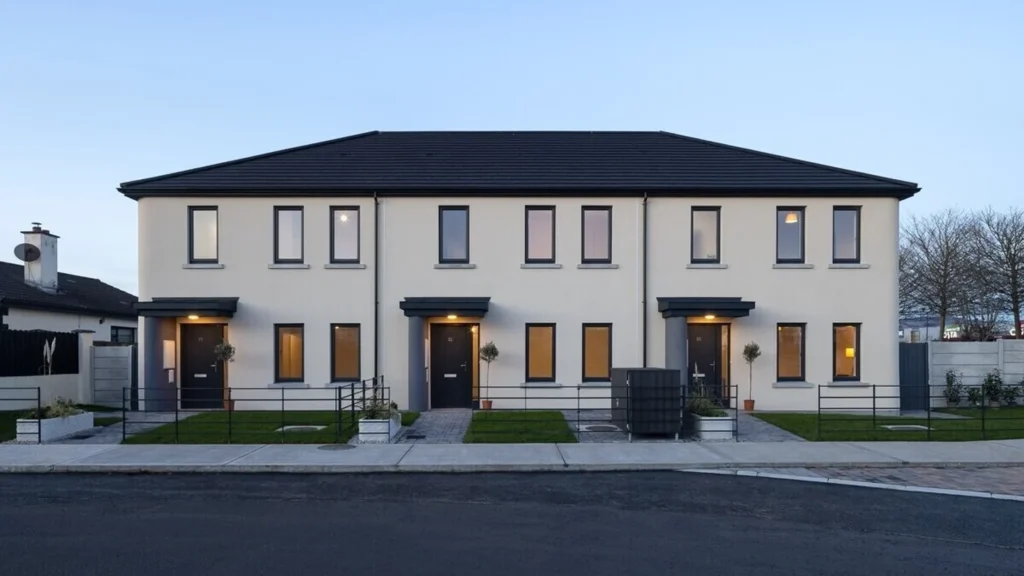
In County Louth, three families moved into Ireland’s first two‑storey, three‑bedroom 3D‑printed homes in 2025. Built in just 12 days of printing and 18 days onsite, each house cost around €253,000. The project involved Harcourt Technologies, Louth County Council and training bodies. It serves as a pilot for future social housing initiatives across the country.
5. ICON‑Lennar Wolf Ranch Community, Texas
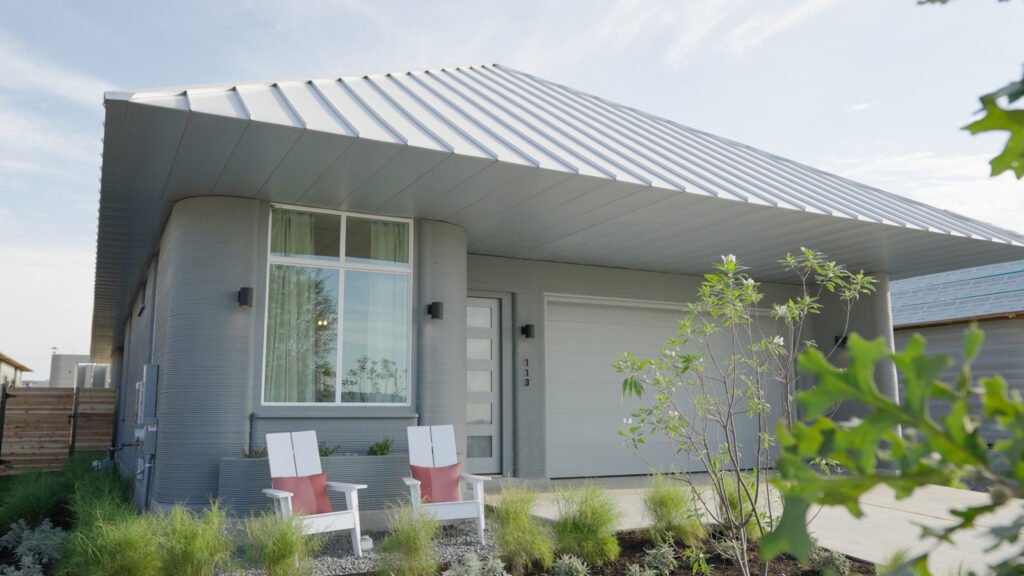
The Wolf Ranch community in Georgetown, Texas, comprises 100 single‑level ranch homes printed by ICON in collaboration with Lennar using Lavacrete. Built over 4–6 weeks (far shorter than standard framing), these homes boast resistance to fire, hurricanes, earthquakes and insects. They are also designed to save energy in the local climate, and represent one of the largest 3D‑printed neighbourhoods to date.
6. ICON’s Austin Homeless Housing Project
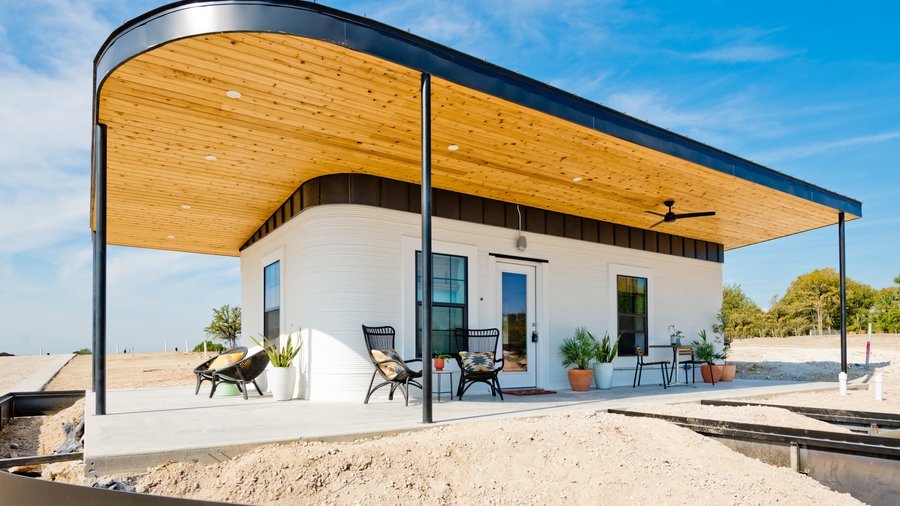
In March 2020, ICON completed seven 400 ft² homes in Austin, Texas, in just 27 hours per house. Designed to shelter homeless individuals, the project was printed onsite using ICON’s Vulcan printer and Lavacrete mix. The first residents moved in that year. ICON later expanded with the Wolf Ranch project mentioned above.
7. Project Milestone — Germany’s First Printed Residential House
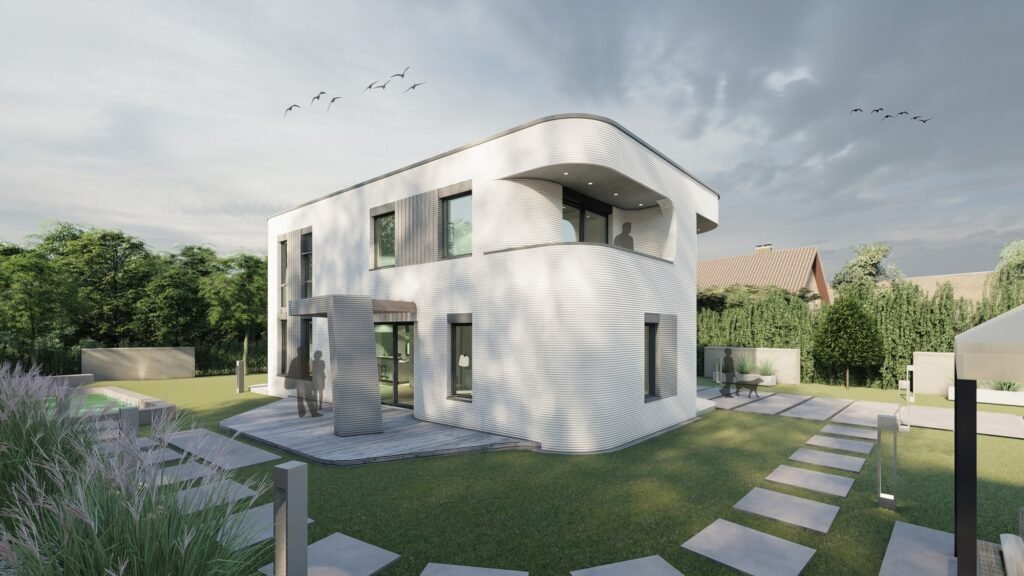
In late 2020, PERI and COBOD teamed up in Germany to construct the country’s first 3D‑printed residential building. Walls for a 160 m² home were printed in a factory using COBOD’s BOD2 printer, then delivered and assembled onsite. The printer produced wall panels at roughly 1 m² every five minutes. Only two operators were needed to complete the job by November 2020.
8. 3D Print Canal House, Amsterdam
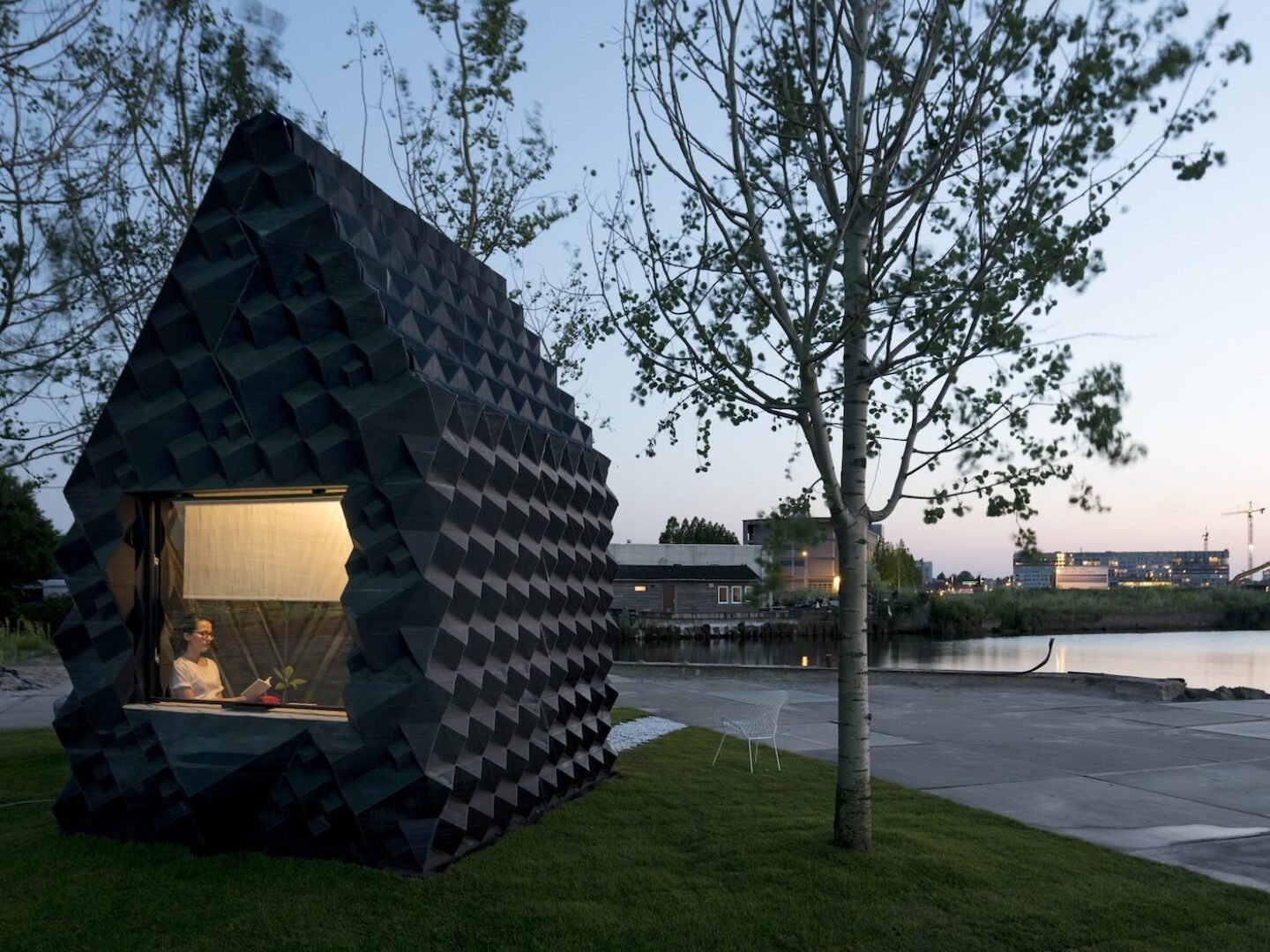
Originating in 2014, the 3D Print Canal House is a long‑term research and exhibition project in Amsterdam (Noord). Created by DUS architects and printed by the Kamermaker robot, the house explores design, culture, technology and city life. Visitors can tour the printed pavilion built using massive fused‑deposition machines that can fabricate modules up to 3.5 m high.
9. The Tecla Prototype Home, Italy
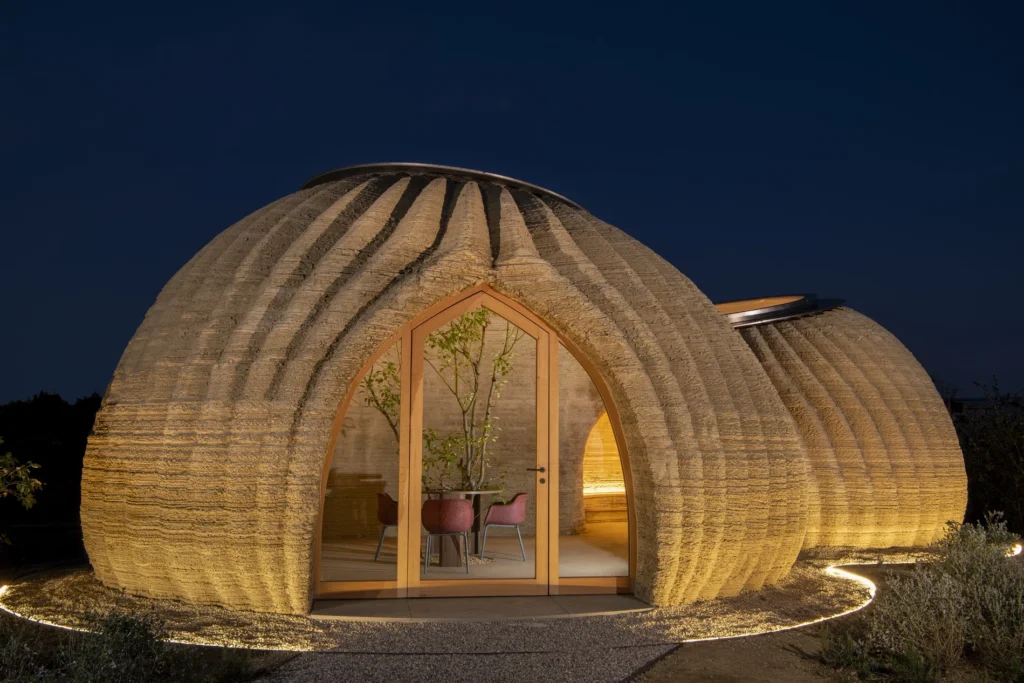
In April 2021, Italian firm WASP and Mario Cucinella Architects completed Tecla, a 60 m³ eco‑home printed entirely from local earth/clay, rice husk fibres, and water. This pioneering structure demonstrated the potential for climate‑friendly housing, offering high insulation and low carbon emissions. The dome‑shaped home was printed in approximately 200 hours and still undergoes testing for structural performance.
These nine buildings, mosques, homes, shelters, and towers, illustrate the immense potential of large‑scale 3D printing in real architecture. They inspire possibilities for faster delivery, lower emissions, affordability, and design freedom. As the technology matures, we can expect more structures to emerge globally, perhaps even homes on other worlds, following in ICON’s partnership with NASA to explore 3D printing on the moon.


